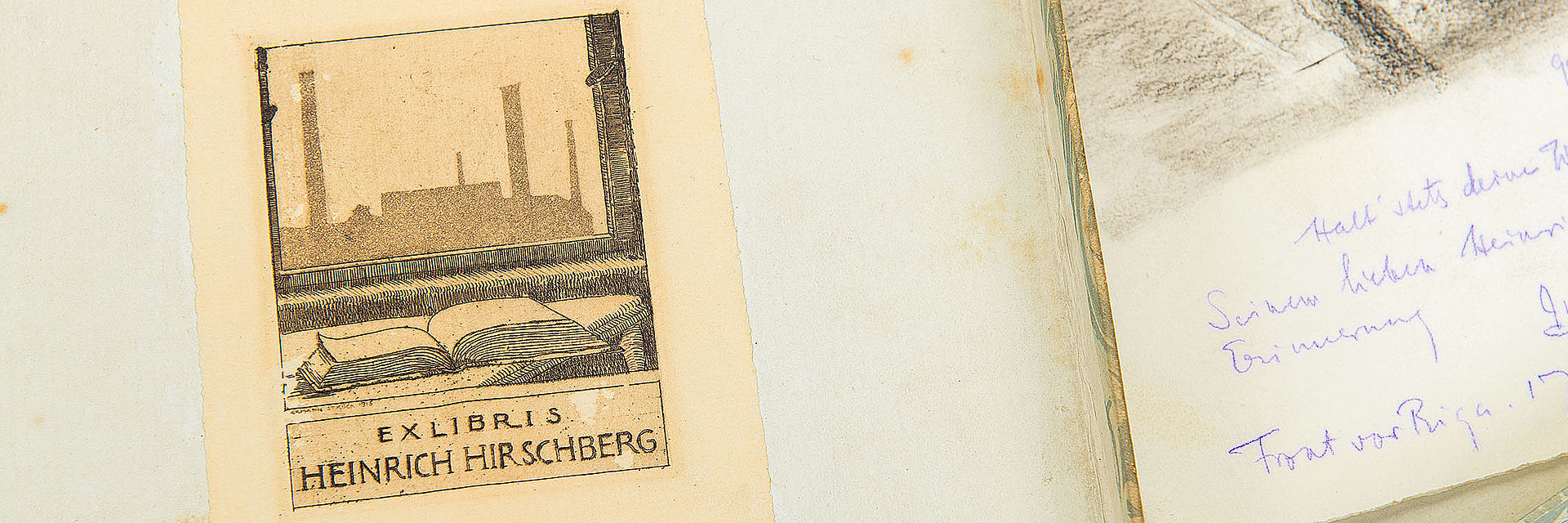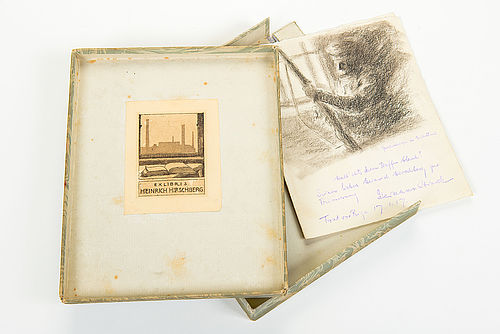
Heinrich Hirschberg's guest book, 1916-1923
Object of the month May 2020

SDTB / Foto: Clemens Kirchner
The guest book on display belonged to Heinrich Hirschberg. A sticker on the inside of the box lid makes that clear. Such bookplates specifying the owner of a book are often elaborately and artistically designed. Heinrich Hirschberg was born in Berlin in 1876. He was the Director of the “Allgemeine Elektricitäts-Gesellschaft” (AEG) and a member of the Board until 1933. After 1933, he and his wife Rosa were persecuted as Jews and had to flee Germany in 1938. They went to exile in Nice, Lisbon and eventually New York City, where Heinrich Hirschberg passed away in 1946.
There is a story behind every object in the museum. The telling of these stories invariably involves investigative work. Surviving evidence of past usage like, for example, bookplates makes each exhibit unique and provides information about its past. Knowing the provenance of objects matters because their previous owners may not always have given them up voluntarily.
During the National Socialist era, several million people throughout Europa were persecuted as Jews, robbed, forced into exile or murdered. They were made to leave all their belongings behind or sell them under duress or were forced to turn them over to state agencies.
Even long after the war had ended, these objects continued to find their way into archives, libraries and museums by way of antique, art and second-hand goods dealers. The central task of the Deutsche Technikmuseum’s provenance research is to track these objects down.
Why Heinrich Hirschberg’s guest book remained here in Berlin where it was eventually discovered at a flea market and purchased for the museum is still unknown. What is certain, however, is that we continue to search for his heirs in order to return the book to them.
